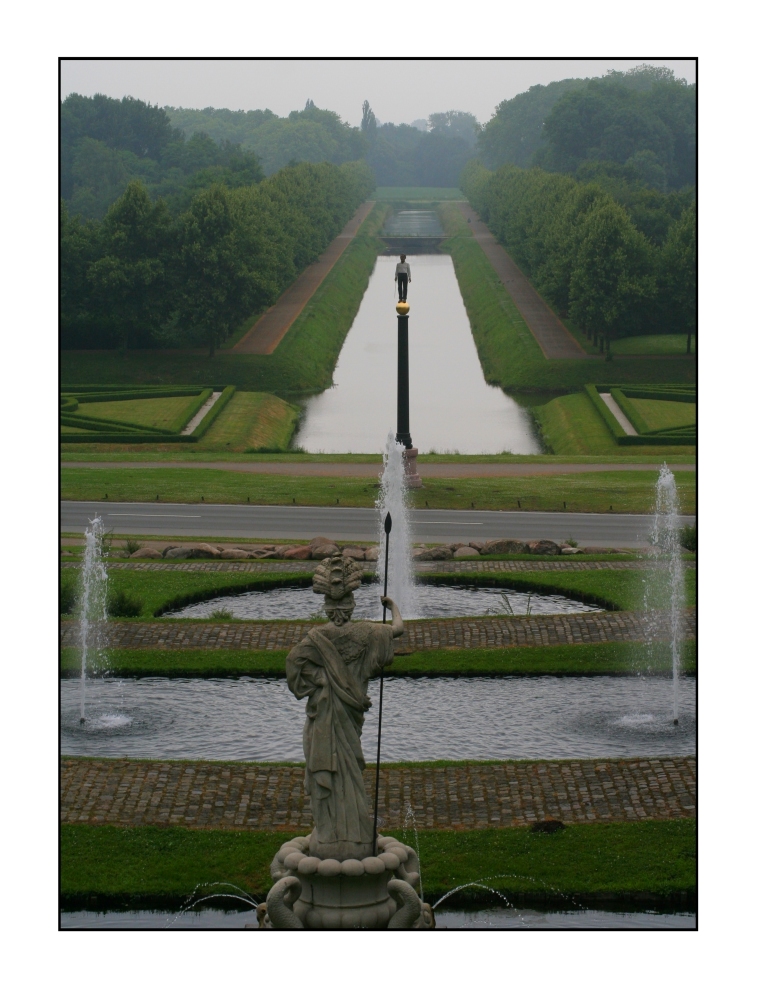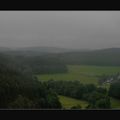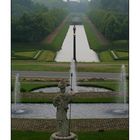Minerva trifft den Eisernen Mann - Minerva meets the Iron Man
Vor etwa 350 Jahren kam Johann Moritz von Nassau-Siegen, damals Statthalter der Kurfürsten von Brandenburg, auf die Idee, die Landschaft um seinen Regierungssitz Kleve völlig neu zu gestalten. Er legte Parks, Alleen und Gärten an, setzte die Stadt in Stand und schmückte die Anlagen mit Kunstwerken. In seinem Tiergarten ließ er Brunnen und ein Amphitheater errichten, und als ihm die Stadt Amsterdam zum Dank für seine Verdienste als Niederländischer Feldherr eine von Quellinus geschaffene Minerva-Statue schenkte, plazierte er sie dort. Gegenüber ließ er eine Säule aufstellen, die aus einem alten Kanonenrohr und angeschweißten Kanonenkugeln bestand, gekrönt von einer alten Rüstung, genannt der Eiserne Mann. Zusammen sybolisierten die beiden das Gegen- und miteinander von Kunst und Krieg. Der zwischenzeitlich verlorengegangene Eiserne Mann wurde 2004 durch eine von Stefan Balkenhol geschaffene Statue ersetzt, die das Thema aufgreift ohne sklavisch zu kopieren. Dadurch entstand dieses reizvolle Gesamtkunstwerk. (Die psychologische Deutung diese speziellen Symbolik mag jedem selbst überlassen bleiben :-)
http://de.wikipedia.org/wiki/Eiserner_Mann_(Kleve)
Approximately 350 years ago, Johann Moritz von Nassau-Siegen, at that time governor of the elector of Brandenburg, got to the idea, to reorganize the landscape around his governmental seat at the city of Kleve completely. He positioned parks, avenues and gardens, repaired the city, damaged badly in the Tirty-years-War, and decorated his installations with artworks. In his "deer-garden" he placed fountains and an amphitheater, and when the city of Amsterdam gave him a Minerva-Statue created by Quellinus, thankful for his merits as a Dutch commander, he had it there, guarding one of the fountains. Opposite of her he set up a column which consisted of an old cannon-tube and welded cannonballs, crowned by an old armour , named the iron man. Together the two stood as symbols for the antagonism as well as for the coexistance of art and war.
The iron man, meanwhile lost, was replaced in 2004 with a statue created by Stefan Balkenhol, which takes up the topic without slavishly copying the original. So this appealing total-artwork of landscape and sculptures was re-completed. (The psychological interpretation of this particular imagery may be left everyone's opinion : -)












6229_Andrea 29/01/2020 20:02
Das ist eine der besten Perspektiven für die Aufnahme des Amphitheaters, die ich seit langem gesehen habe.t a s e n e t 21/08/2008 0:09
Sehr schöne Bildidee und gelungene Umsetzung, sowie Bearbeitung!Sehr gute Arbeit!
Viele Grüße
:-)
Felicitas W. 07/08/2008 12:17
Tolle Info und Du hst die beiden Statuen hier auch würdig in Szene gesetzt!LG Fee
Anoli 04/08/2008 20:19
Ein reizvolles Bild und die Informationen dazu sind Klasse!LG Ilona
redfox-dream-art-photography 04/08/2008 6:25
Sehr starke Aufnahme.Super Perspektive und Bildaufbau.
lg, redfox
Clemens E. 20/07/2008 12:34
Joa, nicht schlecht."Eiserner Mann"
Clemens E.Adrena Lin 09/07/2008 7:37
Hervorragend.....Dieses Kunstwerk, die Idee, die dahinter steckt und Deine Aufnahme....Vielen Dank für die Infos.....!
LG Andrea